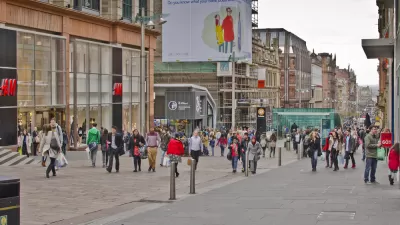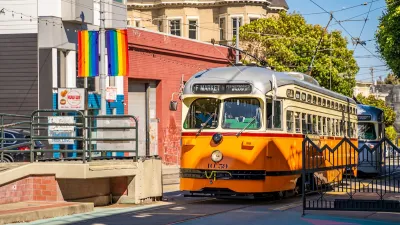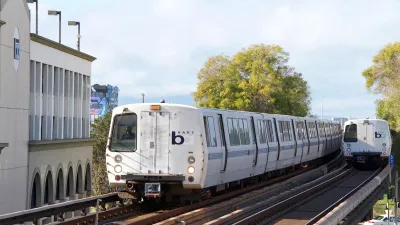After an unsuccessful attempt in 2007, the City is at it again, but doing so in stages. Already in use in limited areas like City Hall and public housing projects, Monday's Market Street roll-out creates a nexus between wifi and surface transit.
On Monday, the city officially began "San_Francisco_Free_WiFi" on the city's main transit corridor, Market Street, writes John Coté. It follows Muni's streetcar from Castro Street to the foot of Market Street at San Francisco Bay. [See map in The Castro Biscuit].
Coté writes that "(u)nlike the original citywide proposal [by former Mayor Gavin Newsom in 2007], which collapsed amid political bickering between the mayor and the Board of Supervisors and concerns over a city contract with EarthLink and Google, this network is constructed and owned by the city."
The foundation of the Market Street wi-fi coverage is provided by "fiber-optic cable along Market Street and connections to network equipment set up on traffic lights and other city-owned fixtures."
Unlike the prior attempt where it contracted with private companies, the city set up its own network at a cost of about $500,000 after donations from two Silicon Valley companies.
"It was simpler, faster, better to do it on our own," said Marc Touitou, whom (Mayor Ed) Lee appointed as the city's chief information officer in April. "The quality is higher, with the technical design by the Department of Technology. We wanted high capacity. ... We wanted it to be cool - no strings attached, no ads."
Coté notes that "despite its proximity to Silicon Valley and the city's tech boom, [San Francisco] is not at the top of the network chain domestically. Residents of both Kansas Cities and Provo, Utah, can get on Google's 1-gigabit fiber network, with Austin, Texas, on the way."
Correspondent's note: This post was prepared, with great patience due to a weak connection to "San_Francisco_Free_WiFi", from a bagel shop about 25 feet from Market Street.
FULL STORY: S.F. rolls out 3 miles of free Wi-Fi along Market Street

Study: Maui’s Plan to Convert Vacation Rentals to Long-Term Housing Could Cause Nearly $1 Billion Economic Loss
The plan would reduce visitor accommodation by 25,% resulting in 1,900 jobs lost.

Alabama: Trump Terminates Settlements for Black Communities Harmed By Raw Sewage
Trump deemed the landmark civil rights agreement “illegal DEI and environmental justice policy.”

North Texas Transit Leaders Tout Benefits of TOD for Growing Region
At a summit focused on transit-oriented development, policymakers discussed how North Texas’ expanded light rail system can serve as a tool for economic growth.

San Diego County Sees a Rise in Urban Coyotes
San Diego County experiences a rise in urban coyotes, as sightings become prevalent throughout its urban neighbourhoods and surrounding areas.

Los Angeles County Invests in Wildfire Recovery for Parks, Trails, and Open Space
The $4.25 million RESTORE Program supports the recovery of parks, trails, and open spaces damaged by the January 2025 wildfires through targeted grants that promote community healing, wildfire resilience, and equitable access to nature.

Nevada Bills Aim to Establish Home Insurance Assurance Amidst Wildfire Risk
Republican sponsor hopes the FAIR plan would be “a true market of last resort.”
Urban Design for Planners 1: Software Tools
This six-course series explores essential urban design concepts using open source software and equips planners with the tools they need to participate fully in the urban design process.
Planning for Universal Design
Learn the tools for implementing Universal Design in planning regulations.
Alamo Area Metropolitan Planning Organization
City of Santa Clarita
Institute for Housing and Urban Development Studies (IHS)
City of Grandview
Harvard GSD Executive Education
Toledo-Lucas County Plan Commissions
Salt Lake City
NYU Wagner Graduate School of Public Service





























